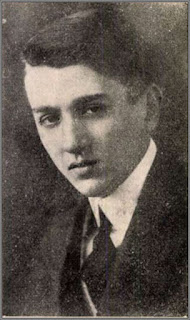Suite Marrakech for Wind Quintet
***
***
A preface by the composer.
Five impressions throughout one day in the ancient Moroccan capital of Marrakech make up the Suite Marrakech for wind quintet. This is as much or as little "programmatic" music as are the five movements of Beethoven's Sixth Pastoral Symphony. They rather depict some of the most famous sights of the city, each during a particular time of the day.
The five movements are as follows:
1. Prelude "La Koutoubia at Dawn"
Radiating from the city's central mosque, the polyphony of the early morning prayer calls gradually fills the air, each voice pursuing its individual pace and melody until they can hardly be separated one from another, forming that distinctive sound mix which is well associated with so many cities of the Arabic world. The five wind instruments each play at different dynamic levels, therefore illustrating the various distances between the city's main mosques; the loudest voice is given to the French horn, who represents La Koutoubia herself.
It is from the very beginning that the suite's "motto" is presented to us
which prominently features throughout all five movements of the piece. As it continues to develop into a more extensive thematic shape it becomes clear that its melodic material consists mainly of the notes of the "Nakriz Makamat", one of the scales of the Arabic harmonic system:
After a final crescendo the prayer calls one by one subside, leaving us with the "motto" to end the movement.
2. Scherzo "Morning in the Souks"
The hustle and bustle of one of the largest markets - or souks - in the Arabic world characterises this scherzo - at times overwhelming whilst always hectically on the move. That there are unexpected turns appearing, opening up alternating views into new areas representing different merchandise and craftsmanship, is illustrated by the two episodes that interrupt the flow of the scherzo.
In the second of these episodes the bassoon suddenly features the main (i.e. the protagonist's) theme from Nikolai Rimsky-Korsakov's symphonic suite Sheherazade op. 35
which from now on - apart from the 3. movement - gains more and more importance until it forms some of the main motivic material in the Finale of the Suite Marrakech. There is no particular importance for the choice of this quotation, other than homage to one of the greatest pieces of classical "oriental" music, and to the general artistic world this music represents. However, the theme itself - unlike in Rimsky Korsakov's original symphonic piece - undergoes frequent melodic and harmonic changes throughout our suite.
3. Lento "La Menara at Noon"
The mid-day heat which reflects the ancient summer pavilion in the quiet waters of the enormous square basin, is captured by the now vertical appearance of the "motto" theme. With no particular rhythmical flow and no more than a few melodic fragments the tension of the dissonant chords builds, until the majestic outburst of the tutti highlights the snow-capped Atlas mountains in the background to this serene landscape. Calm is restored, and after a brief yet unassuming interlude and a cadenza by the English horn, which has now replaced the oboe, the whole scene begins all over again.
4. Intermezzo "Afternoon at La Mamounia"
To step back into the soothing shade of this grand hotel, and into the pre-war atmosphere of its heydays, the music takes on a lilting dance-like rhythm and uniquely features the sounds of the Alto-Saxophone. There is elegance everywhere in this magical place, and no better way to cool off than drinking afternoon tea on the garden terrace whilst taking in the grandeur of the hotel's architecture.
5. Finale "Jmaa El Fna at Night"
As the sun sets the calls for evening prayers begin to fill the air once more, only to give way shortly after to the lights, smells and sounds of the city's greatest square, the Jmaa el Fna. This is where the real charms of Thousand and One Nights come to life: In a mad dash, the Sheherazade theme, albeit now transformed into a folkdance-like tune, takes centre stage. The "motto" also reappears, and in the surrounding of snake charmers, story tellers, food vendors and hustlers, a quieter episode suddenly halts the rush. Not long after, the whirlwind continues. The slower episode returns once again in slight variation, until in the Presto coda of this Finale we - unexpectedly - twice perceive the majestic "Sultan's theme" of Rimsky Korsakov's Sheherazade, in the bassoon and the horn, before this swirling music eventually comes to a halt.
Whilst throughout the suite there is much local flair and oriental kolorit abound, the suite presents itself as an organic whole, not least through the motivic union of the five movements as well as the sequence of the five scenes depicted. The instrumental writing is at times highly virtuosic and polyphonic throughout, and should contribute to making this an enjoyable piece of chamber music, both for the players and for their listeners - and as a fitting tribute to the grand old city of Marrakech.
Alexander Kirsch,
Blackpool, in December 2018.
***
Instruments:
⦁ Flute (also Piccolo)
⦁ Oboe (also English Horn in F)
⦁ Clarinet in Bb (also Alto-Saxophone in Eb & Clarinet in Eb)
⦁ Horn in F
⦁ Bassoon
Duration: ca. 21 minutes
***
Movements:
1. Prelude "La Koutoubia at Dawn" • p. 1
2. Scherzo "Morning in the Souks" • p. 9
3. Lento "La Menara at Noon" • p. 26
4. Intermezzo "Afternoon at La Mamounia" • p. 31
5. Finale "Jmaa El Fna at Night" • p. 43
YouTube: Suite Marrakech for Wind Quintet (A. Kirsch) - MIDI File





Comments
Post a Comment